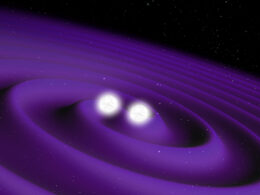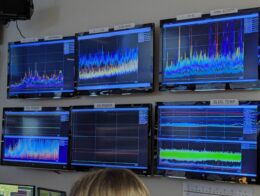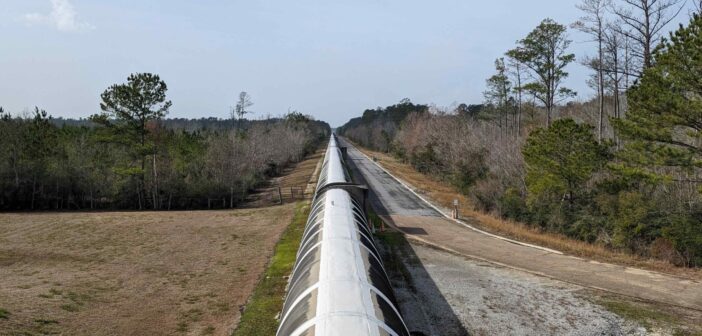Joseph Giaime, a Professor of Physics at Louisiana State University, doesn’t sleep as soundly as he used to. The cause is obvious: every so often, his phone will emit a random, loud ping, regardless of the hour and without care for his desire to rest. He could turn these notifications off, but he purposefully chooses not to. In fact, he’s grateful for the recent disturbances: that’s because Giaime isn’t being woken up by a mindless news alert or a sleepless colleague, but by an automated system within the Laser Interferometer Gravitational-Wave Observatory (LIGO) informing him that it has just spotted a collision at the edge of eternity.
Giaime, like many physicists and astronomers, had to wait many decades to get these notifications, and now savors each one. What was once a just-out-of-reach dream has morphed into a steady stream of discoveries and phone alerts. Every few days LIGO reports that it heard the “sounds” of another merging pair of black holes, or occasionally a set of neutron stars that just smashed each other apart.
To better understand these extreme phenomena and how humanity got so good at detecting them, the AAS Press team led a group of reporters to the LIGO Livingston facility in southern Louisiana after the recent 243rd meeting of the AAS in New Orleans. Here, we provide a summary of that tour and what we learned from the dedicated scientists and support staff that worked for so long to hear the universe’s most distant rumbles.
Ripples in Reality
The “O” in LIGO denotes that the facility is an observatory, but unlike the vast majority of astronomical facilities throughout the world and in space, LIGO does not look for electromagnetic light. Instead, the massive 4-km-long arms that make up the Livingston facility were constructed to detect a different kind of wave: ripples in spacetime itself.

An artist’s rendition of two neutron stars spiraling towards each other and emitting gravitational waves. [ESA, CC BY-SA 3.0 IGO]
The Road to Detection
Today’s reality where LIGO regularly hears these signals (one was detected just three days before our visit) is very unlike the previous several decades of quiet. LIGO’s origins lie in a proposal to the National Science Foundation (NSF) submitted in the late 1980s. The team broke ground at the two identical facilities in Washington state and Louisiana in 1994 and 1995, respectively, before many of the graduate students currently working on the data analysis were born. Then, from the early 2000s through 2010, both facilities “listened” to the universe, but heard nothing.

Monitors in the LIGO control room to track the real-time noise contributions of various sources, including “human activity,” “ocean waves,” and “earthquakes.” [Ben Cassese]
Instead of backing away from their commitment, already one of the largest projects in their history, the NSF doubled down in 2010 and approved another tranche of funding to upgrade the facilities. LIGO went dark for five years as the collaboration overhauled numerous components, implementing both lessons learned during previous observations and new technologies that had been invented in the past decade. In 2015, they were ready to begin testing their new setup, dubbed “Advanced LIGO.”
Immediate and Continuing Payoff
In September, the collaboration was in the middle of an “engineering run,” meaning the detectors were fully operational but the team hadn’t yet transitioned into science operations. As has been well documented elsewhere, the impatient universe did not bother with their commissioning plans, and almost immediately the team recorded the distinctive and amazingly clear “chirp” of two merging black holes. “This [signal]was so big that we didn’t even need theorists” says Giaime, and immediately it became clear that the long wait for a gravitational wave signal was over.

Photographs hung on the walls of the LIGO Livingston site depicting scenes from upgrades and maintenance over the years. Click to enlarge. [Ben Cassese]
Other facilities have already joined the search for gravitational waves, and have now detected them at other frequencies. The NANOGrav collaboration and their discovery of a gravitational wave background, for example, was the focus of the kickoff plenary session at the 243rd meeting of the AAS. Other proposed projects, such as LISA, should continue exploring yet more frequencies in the coming years. Each of these missions will stand on the shoulders of scientists working near the Louisiana swamps, and the LIGO Livingston facility will rightly be remembered as a historical site in science.

